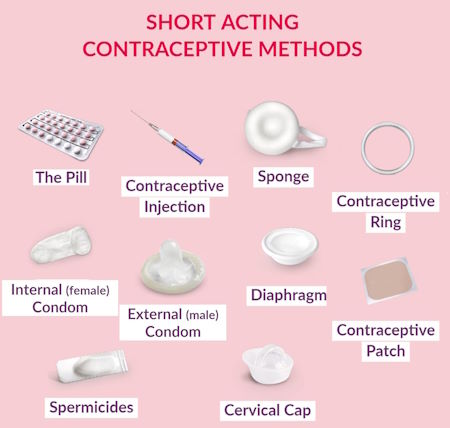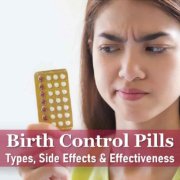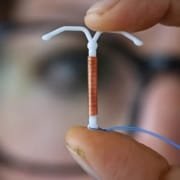Family Planning / Contraception methods
Family planning is about making choices. It involves selecting the right contraceptive method for you, your partner, or both to prevent unintended pregnancies. Let’s explore various contraceptive options, helping you make informed decisions tailored to your needs.
Why Choose Contraception?
Contraception empowers individuals and couples to have greater control over their reproductive health. By understanding your options, you can make choices that align with your goals and lifestyle. Factors like cost, side effects, and effectiveness should be considered when making your decision.
Types of Contraceptive Methods
The world of contraception offers a variety of methods to choose from. These include:
- Barrier Methods: Physical barriers like condoms, diaphragms and sponges offer reliable protection.
- Contraceptive Pills: Oral contraceptives are a popular choice among women.
- Vaginal Ring: A convenient, hormonal contraceptive option worn vaginally.
- Subcutaneous Implant: A discreet, long-acting contraceptive placed under the skin.
- Skin patches: contain hormones and easy to use on the skin.
- Intrauterine Devices (IUDs): A highly effective, low-maintenance option placed inside the uterus.
- Injectable Contraception: Periodic injections provide pregnancy prevention.
- Withdrawal method or coitus interruptus: involves withdrawing penis from vagina before ejaculation.
- Natural family planning method or fertility awareness method: involves limiting intercourse to the non-fertile days of the cycle only.
- Emergency contraception: involve hormone pills in the event of accidental sexual intercourse
- Sterilization: Male and female sterilization are permanent methods of completely taking away the body’s ability to reproduce through surgery or minimal invasion.
Choosing the Right Contraceptive Method
Selecting the most suitable family planning method is a personal decision that hinges on informed choices. It’s important to note that no contraceptive method is flawless, and each comes with its pros and cons.
To make the right choice, it’s crucial to weigh the advantages and disadvantages of each method. Opt for the one you can consistently and correctly use, as the best contraceptive method is the one you trust and feel confident about, without causing troublesome side effects.
Seeking guidance from a specialist ensures you have all the necessary information, as various treatment alternatives may not be widely known. Adequate information about family planning is essential for making an informed decision.

Short-acting Contraceptive Methods Ranked by Efficacy
- Contraceptive Injection
- The Pill
- Contraceptive Patch
- Contraceptive Ring
- External (male) Condom
- Diaphragm
- Internal (female) Condom
- Sponge
- Cervical Cap
- Spermicides

Long-acting Contraceptive Methods Ranked by Efficacy
- Contraceptive Implant
- Hormonal Coil – IUS
- Copper Coil – IUD

Other Contraceptive Options Ranked by Efficacy
- Sterilization
- Natural Family Planning
- Pull-Out (Withdrawal) Method
- Emergency Contraception
Are Contraceptive Methods Safe?
Ensuring the safety of contraceptive methods is a significant concern for women. The security of your chosen option depends on several factors, primarily the correct usage.
Method failure often occurs due to improper use, while infrequently medication or device failure can also lead to family planning mishaps.
Certain methods, such as intrauterine devices (IUDs) and subcutaneous implants, have a lower risk of failure, primarily because they are easier to use and are used more consistently.
Generally, contraceptive methods designed for on-demand use, like condoms and diaphragms, tend to be less secure compared to those used on a scheduled and planned basis, such as the IUD or contraceptive pills.
Barrier Methods
Barrier methods play a crucial role in preventing sperm from entering the uterus. These include:
- Male Condom
- Female Diaphragm
- Cervical Cap
- Sponges
Birth Control Pills
Most birth control pills, often referred to as “the pill,” contain a combination of two female hormones: estrogen and progesterone. When taken correctly, these pills are highly effective.
If you happen to miss a contraceptive pill, it’s advisable to take it as soon as possible. However, if you miss it for more than a day, it’s essential not to skip any further. In such cases, we recommend using an additional form of backup contraception, such as a condom.There is also a pill available for emergency purposes in cases of accidental unprotected intercourse.
Side Effects of the Pill
Birth control pills may have some side effects, including:
- Nausea
- Breast tenderness
- Bloating
- Mood changes (usually improving after two to three months)
- Spotting or irregular vaginal bleeding, especially common during the initial months or if a pill is missed.
Apart from combination pills that contain both estrogen and progesterone, there is also the progesterone-only pill, known as the minipill. This option is suitable for women who cannot take estrogen, such as those who are breastfeeding. However, it may also lead to irregular bleeding.
Skin Patches
An alternative method of birth control is using skin patches. These patches, like birth control pills, contain both estrogen and progesterone. They are equally effective and have the advantage of not needing daily administration.
Vaginal Ring
The vaginal ring is a pliable, ring-shaped plastic device. It contains estrogen and progesterone, which are gradually absorbed by the body.
Once inserted, it remains in the vagina for three weeks before being removed for a one-week break. The vaginal ring is discreet and straightforward to insert and remove for most women.
Risks and side effects associated with the vaginal ring are comparable to those of birth control pills.
Subcutaneous Implant
The subcutaneous implant is a device placed beneath the skin of the forearm, containing progestogens (hormones from the progesterone family). This contraceptive method involves a small single rod inserted under local anesthesia. It provides pregnancy prevention for at least three years through the gradual release of hormones.
If you change your mind or wish to discontinue, you can have the implant removed at any time. The implant becomes effective 24 hours after insertion.
The most common side effect is irregular bleeding, similar to other contraceptives containing only progestin or progesterone.
Intrauterine Devices (IUD)
Intrauterine devices (IUDs) are inserted through the vagina and cervix into the internal cavity of the uterus. The currently available IUDs for family planning are safe and highly effective.
There are two main types of intrauterine devices:
- Copper IUD: The copper IUD does not contain hormones. It may, in some cases, lead to slightly heavier periods. For women with menstrual issues related to increased bleeding, this may be a concern.
- Levonorgestrel-releasing IUD or Mirena: This IUD releases a hormone from the progesterone family, which thickens cervical mucus and thins the uterine lining. It reduces menstrual bleeding and alleviates menstrual pain. It’s important to note that some women may stop having periods entirely while using this IUD, but this effect reverses once the IUD is removed.
Injectable Contraception
Injectable contraception also relies on the administration of progestin hormones, which belong to the progesterone family. The hormone is administered via a muscular injection every three weeks.
While irregular bleeding is a potential side effect of this method, it is highly effective when used correctly. Approximately 50% of women may cease having periods after one year of using this contraceptive. As a result, it is recommended for women who do not wish to become pregnant for a minimum of one year.
It’s worth noting that ovulation and menstrual periods usually resume within six months after the last injection, although it may take a bit longer in some cases.
Natural Family Planning
Natural Family Planning, also known as Fertility Awareness Methods, involves accurately determining your current menstrual cycle phase and identifying the periods of fertility to engage in unprotected intercourse only during those times when fertility is low. This approach necessitates the observation of fertility indicators. Various methods exist, such as tracking menstrual cycle days, monitoring temperature fluctuations in the body, and closely monitoring changes in cervical mucus. This method requires thorough understanding of the menstrual cycle.
Sterilization
This is the permanent method of contraception when both partners don’t want any more pregnancy. It includes female sterilization by surgical or non-surgical methods; involving cutting or ligating the tubes by surgery or non-surgically putting a small flexible, metal insert into the fallopian tubes through the vagina with a special catheter. Male sterilization is done by ligating and cutting the sperm carrying ducts at vasectomy.










